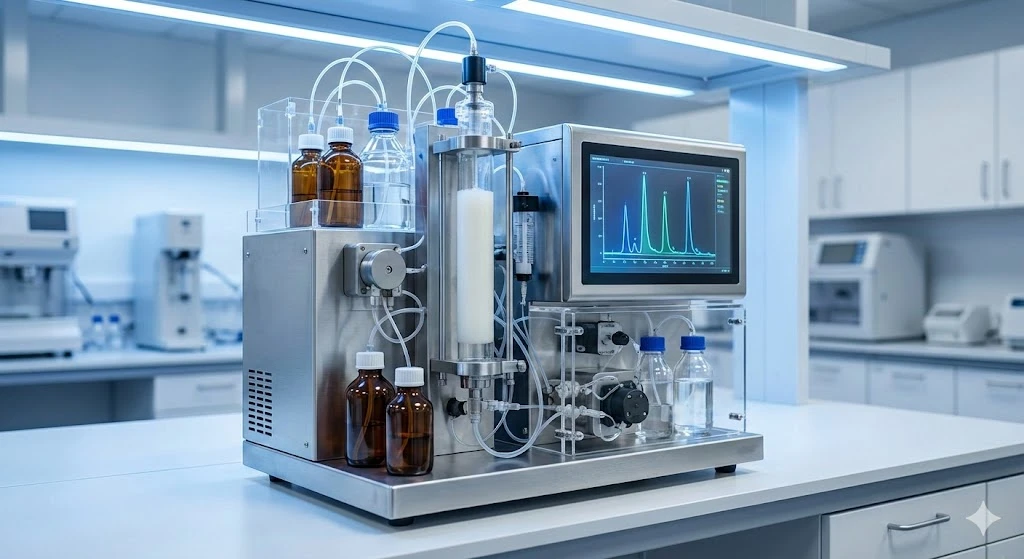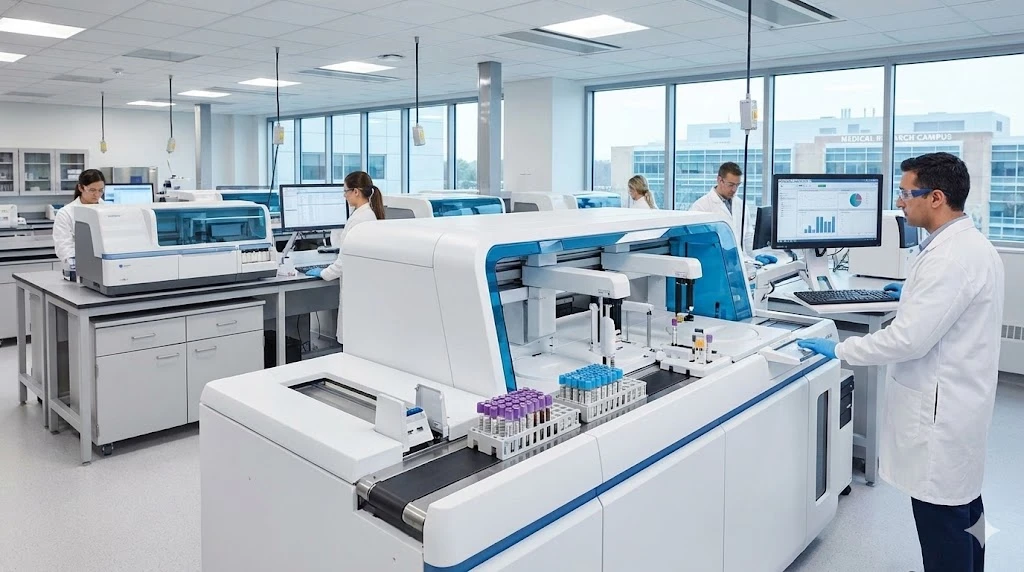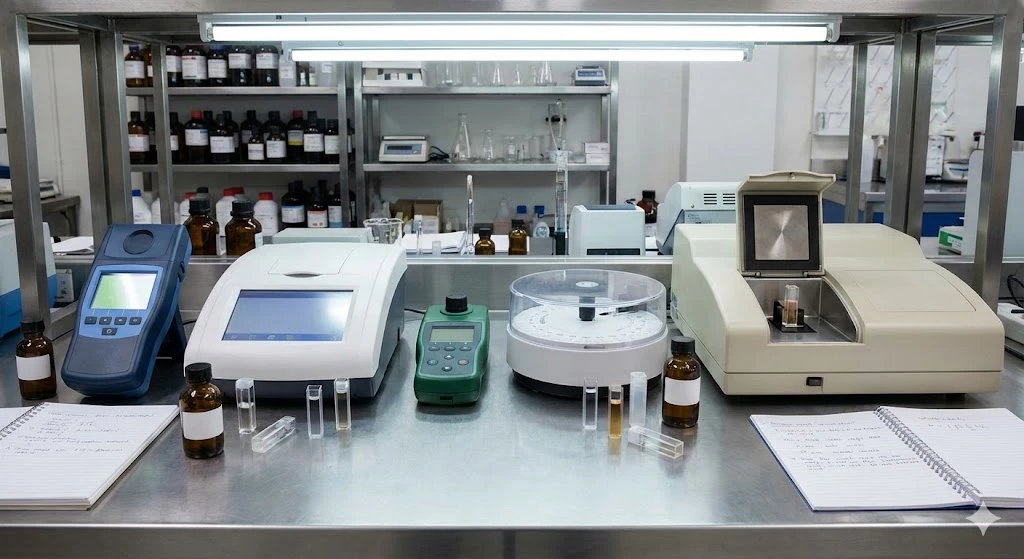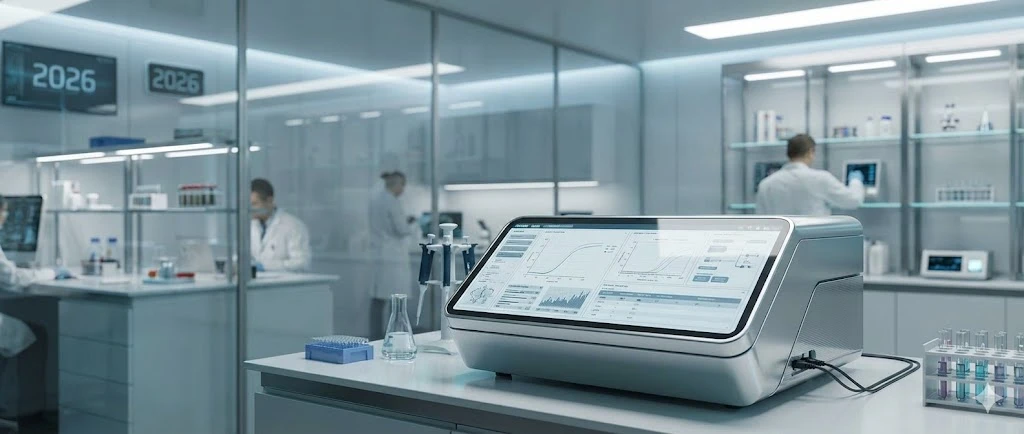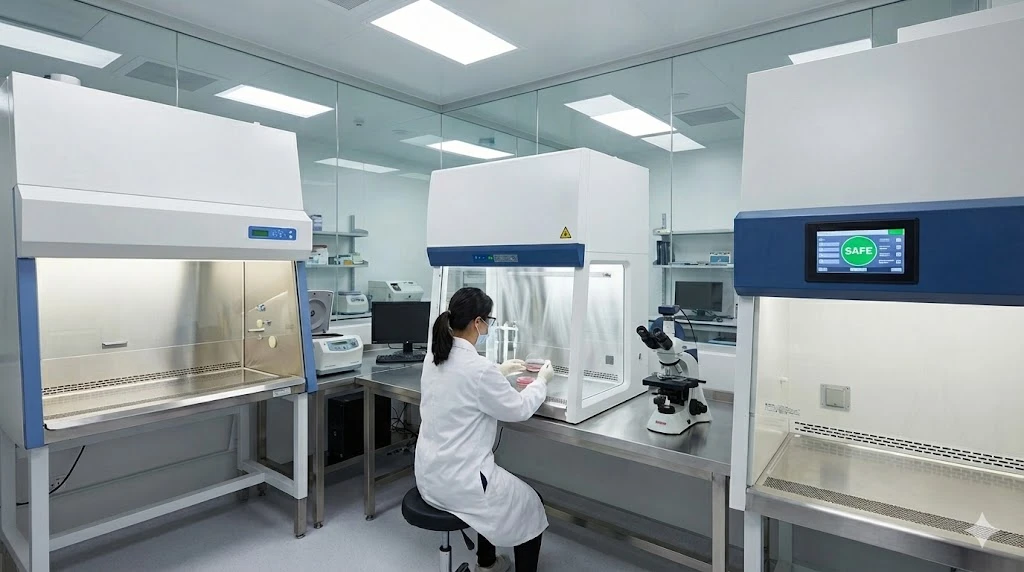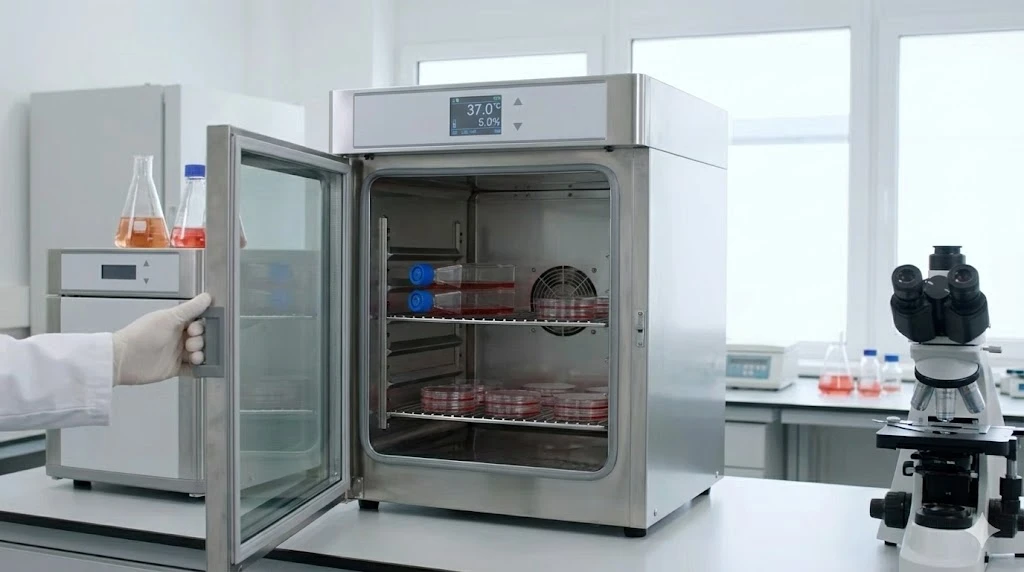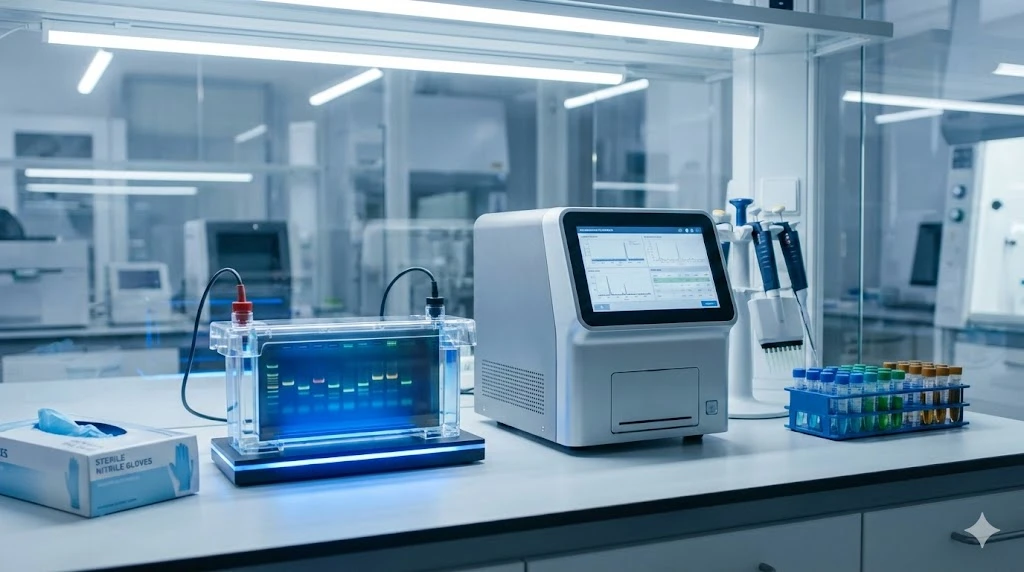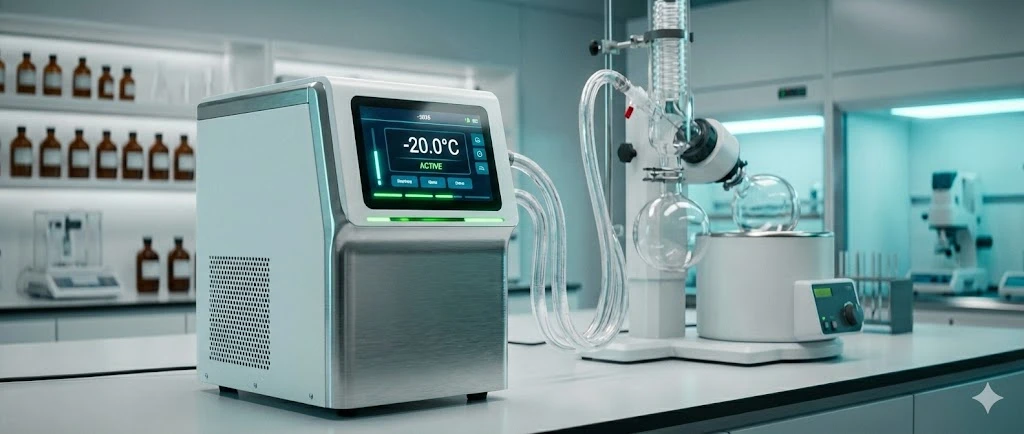Quality Control of Electrolytes and Coolants: Using Refractometers in Battery and Fuel Cell Labs
ImageFX (2025) The performance and longevity of batteries and fuel cells are often defined by the properties of their internal fluids. From the concentration of an electrolyte that determines a battery's capacity to the purity of a coolant that protects a fuel cell from overheating, these seemingly simple liquids are critical to a technology's success. For laboratory professionals, maintaining stringent quality control over these fluids is non-negotiable. This is where the refractometer—a deceptively simple yet powerful analytical tool—proves its worth. By measuring the refractive index of a fluid, a refractometer provides a rapid, accurate, and non-destructive way to determine its concentration, purity, and composition. This article delves into how this essential instrument is used to validate and optimize the fluids that power our future, ensuring reliability and safety from the lab to the grid. At its core, a refractometer measures the refractive index, a fundamental physical property of a substance. The refractive index is a measure of how light bends, or refracts, as it passes through a material. When a beam of light travels from one medium (like air) to another (like a fluid sample), it changes speed and direction. The degree to which it bends is directly related to the density and concentration of the dissolved substances in that fluid. For a refractometer, this relationship is key: A pure substance has a specific, known refractive index. When other substances are dissolved in it, the refractive index changes in a predictable way. Modern digital refractometers leverage this principle by shining a light source through a prism and a fluid sample. They precisely measure the angle of refraction and instantly convert it into a meaningful value, such as concentration in degrees Brix, a specific gravity, or a percentage. This provides a quantifiable measure of the fluid's composition without requiring complex chemical analysis. The versatility of a refractometer makes it an invaluable tool across various applications in energy storage and conversion research. It provides a simple, yet robust, method for ensuring fluid quality at multiple stages of development and testing. Electrolyte Concentration: In many battery chemistries, the concentration of the electrolyte is a critical factor influencing ion conductivity, cell performance, and stability. A refractometer is used to: Verify the correct concentration of new electrolyte solutions before they are used in cell fabrication. Monitor for changes in concentration during long-term cycle testing, which can indicate side reactions or material degradation. Perform a quick check on incoming raw materials to ensure they meet quality specifications. Coolant and Thermal Fluid Analysis: High-performance batteries and fuel cells generate significant heat, and managing this heat is crucial for safety and longevity. Refractometers are ideal for checking the concentration of coolants like ethylene glycol or propylene glycol. This ensures the fluid has the proper freeze protection and heat transfer properties. This is a non-destructive method that requires only a small sample, making it perfect for rapid, in-situ checks on active cooling systems. Fuel Cell Water Management: For proton-exchange membrane (PEM) fuel cells, water management is essential for optimal performance. A refractometer can be used to: Test the purity of deionized water used for humidification or cooling. Contaminants can be detected by a shift in the refractive index. Analyze water byproducts to detect any unexpected dissolved components that could indicate a material breakdown or a system issue. Component Manufacturing Quality Control: Beyond the final fluid, refractometers can be used to test the concentration of cleaning solutions or the composition of binders and slurries in the manufacturing of battery electrodes. This ensures consistency and quality from the very first step of production. In a laboratory environment with access to a wide array of analytical tools, the choice of a refractometer for fluid analysis is a deliberate one, driven by several key advantages: Speed and Efficiency: A measurement can be taken in a matter of seconds, providing immediate feedback on a sample's quality. Minimal Sample Volume: Most refractometers require only a few drops of fluid, which is especially beneficial when working with rare or expensive chemicals. Non-Destructive Testing: The sample remains unaltered and can be reused or subjected to further analysis. Cost-Effectiveness: Refractometers are generally more affordable than other analytical instruments that perform similar functions. Ease of Use: With minimal training, a lab professional can obtain accurate and repeatable results, reducing the potential for human error. These benefits make the refractometer an ideal tool for high-throughput quality checks, rapid troubleshooting, and general-purpose monitoring, freeing up more sophisticated instruments for in-depth, specialized analysis. In the complex world of renewable energy research, success depends on precision and attention to detail. The refractometer, by providing a simple and highly effective method for controlling the quality of electrolytes and coolants, plays a vital role in this process. It is a fundamental instrument for lab professionals who understand that the reliability of a technology is not just about its power output but also about the integrity of its most basic components. By mastering this tool, researchers can ensure their innovations are not only electrically brilliant but also built on a foundation of quality and safety, paving the way for a more reliable and sustainable energy future. A1: A refractometer works by measuring the refractive index of a fluid, which is how much light bends as it passes through it. As the concentration of the electrolyte changes, the light bends differently, allowing the instrument to provide a direct reading of the concentration. A2: Using a refractometer for coolants is important because it quickly and accurately measures the concentration of the coolant mixture (e.g., ethylene glycol). This ensures the fluid has the proper heat transfer and freeze-protection properties, which are critical for preventing thermal damage to the battery. A3: Refractometers are ideal for quality control because they are fast, require a very small sample size, are non-destructive, and are relatively easy to use. This allows for frequent and efficient checks on fluid quality without disrupting experiments or wasting expensive materials. A4: Yes, a refractometer can detect impurities indirectly. If a fluid's refractive index deviates from its known value for a pure substance, it indicates the presence of a dissolved impurity or a change in concentration. This deviation signals that further analysis is needed.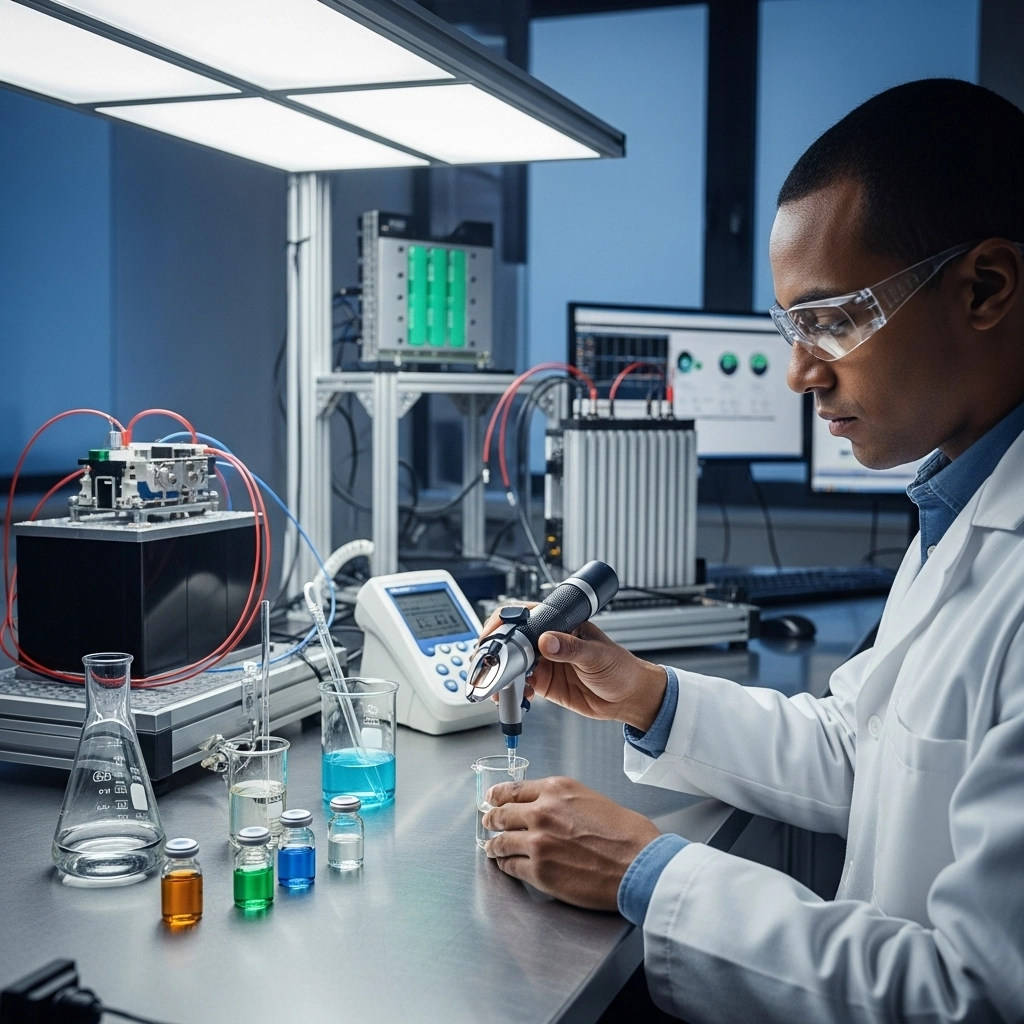
Understanding Refractometers: The Principle of Refractive Index
Refractometer Use Cases in Battery and Fuel Cell Labs
Why Use Refractometers for Electrolyte and Coolant QC?
Conclusion: Refractometers for a Precise and Safe Energy Future
FAQ
Q1: How does a refractometer work to measure electrolyte concentration?
Q2: Why is using a refractometer for coolants important in a battery lab?
Q3: What makes refractometers ideal for quality control in a lab environment?
Q4: Can a refractometer detect impurities in a fluid sample?

